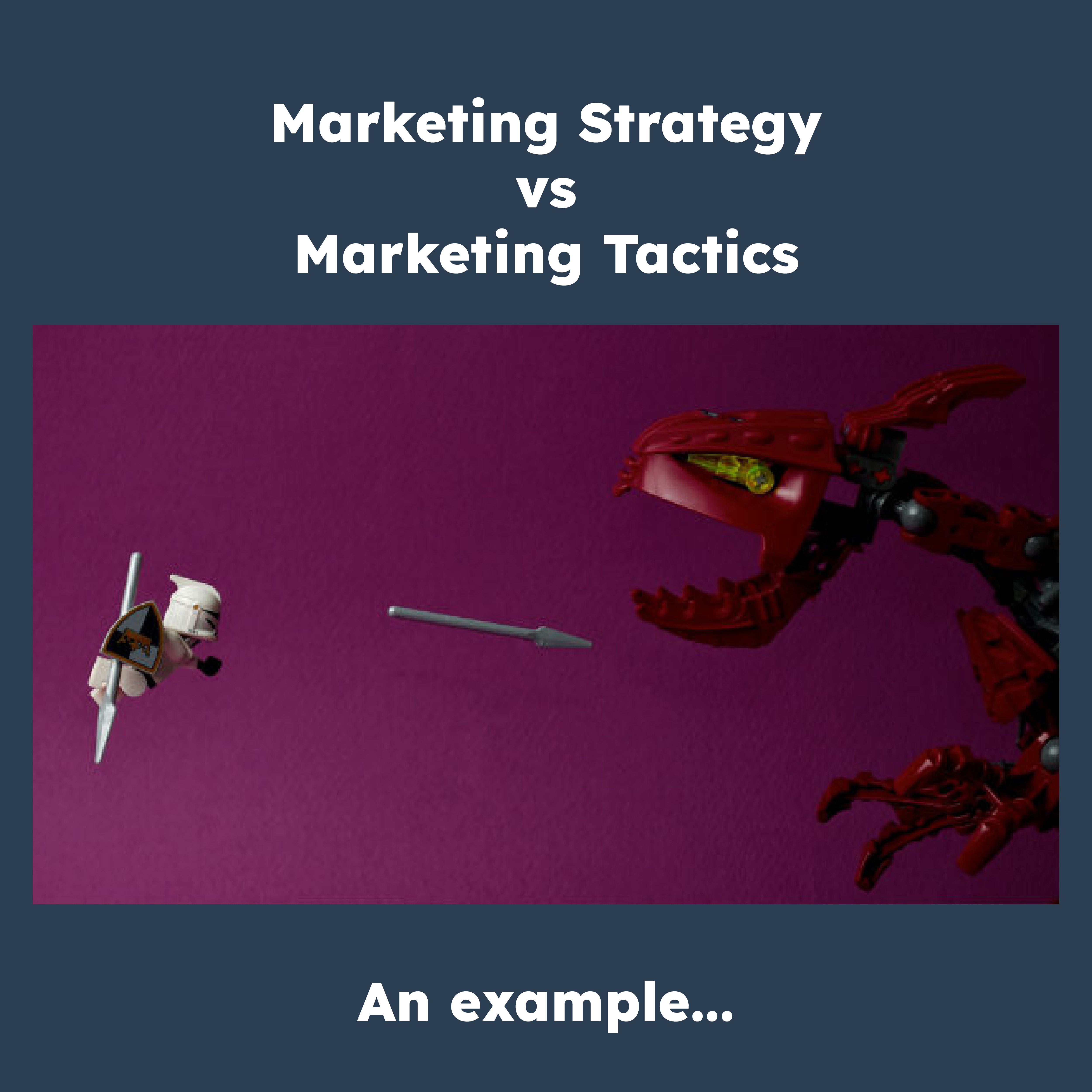It seems to me the misunderstanding between marketing strategy and tactics is far too common amongst marketers, PRs and perhaps more importantly clients who never really question it. I think this is perhaps because strategy is a sexy buzzword used by management consultants and the self-proclaimed ninjas, gurus and The Apprentices of the world to infer some secretive superior knowledge.
Actually, though I think it’s quite a simple distinction. As we’ll find all strategy and no tactics is simply not enough to gain traction in the noisy overcrowded marketplace.
So, what is the difference between strategy and tactics?
Tactics
Tactics are highly practical things you will do every day. Writing blog posts, sending tweets, replying to emails, outreach to bloggers, changing page titles and appointments you make/attend etc.
Strategy
Strategy is a strong overarching vision, intended to fulfill your predetermined goals and objectives. Strategy is the plan that ensures all your day to day activities (tactics) contribute to your monthly, quarterly and annual business goals.
Marketing strategy example
With this in mind you can go ahead and work on your marketing strategy. Let’s just sketch out a quick example.
Before you dive headfirst into the strategy shindig and party hard, you’ll need to have set solid objectives and goals. I know it might sound cheesy, but it’s true – and one of the things I see overlooked most commonly.
In order for strategy to be effective you should already have outlined your goals (it’s surprising how many companies don’t do this), and know your intended audience. All goals you set should be SMART:
Specific – Can the detail in the information sufficiently pinpoint problems or opportunities?
Measurable – Can a quantitative or qualitative attribute be applied to create a metric?
Actionable – Can the information be used to improve performance?
Relevant – Can the information be applied to the specific problem faced by the manager?
Time-related – Can the information be viewed through time to identify trends?
Okay, so here’s an example
Here’s a quick overview of what your strategy and tactics may look like for an overly simplistic goal. Of course you will usually have several goals running at the same time and you actually should structure your strategies to differentiate your business.
Goal:
Increase sales revenue by 25% by the End of the Year
Objectives
Increase Awareness of our website to Target Audience (TA) by 100% by the end of the year
Increase Traffic To Website by 50% compared with last year
Increase Repeat Purchases by 10% compared with last year
Increase Average Order Value from £50 to £55 this month
Example Strategy:
1. Engage Target Audience at key touch points in their day when receptive to brand messaging
2. Drive traffic from new unique visitors to your website
3. Encourage Repeat Purchases from Existing Customers
4. Increase Average Order Value from within the cart
Example Tactics:
1a. Run TV ads targeted at TA in the middle of the day
1b. Run Facebook Advertising at lunchtimes based around similar interests
1c. Acquire Coverage in National Magazines targeted at TA using PR
1d. Run Online Banner Advertising on XYZ sites targeted at TA in the evenings
1e. Sponsor Local Sporting Events
1f. Create content around the shopping & lifestyle needs of your customers
2a. Ensure website URL is featured in TV ads
2b. Add URL to Twitter Bio
2c. Start 10+ conversations per day with TA on Twitter
2d. Lead Industry based Tweet chats on Twitter, encouraging influencers to join in
2e. Create video based responses embedded in well SEO’d blog posts with transcripts
2f. Share video blog posts to people on Twitter (monitoring for people asking Qs and responding)
3a. Email existing customers with referral % deal for new customers
3b. Print vouchers added to all orders sent out this month
3c. Competition: invite friends to enter mechanism (opt-in email data capture)
4a. Add attractive deals to the cart automatically (worth around 10% of transaction value)
4b. Increase the Free Delivery Threshold from £35 to £45
4c. Add gift wrapping options to the cart (with images of premium gift packaging)
4d. (If you’re feeling particularly naughty) Auto opt-in to higher cost delivery / up-sells
Well, that escalated quickly, eh?
An interesting point to consider is that strategies are usually timeless (people still react in pretty much the same way as they did 100 years ago) whilst tactics are technology/time sensitive. So, if you change the time frame (e.g. 1900, 1980, 2013) your strategy would remain the same, whilst the tactics will more than likely change.
e.g. Engage Customers In Store To Increase Sales
1900 – Put up posters in your shop promoting deals
1980 – Electronic screens updating your specials board
2013 – AR app, mobile optimised website, foursquare deals, customer service in social media etc.
To sum up, being better thought-through and organised than your competitors will add to your bottom line – by pursuing clear and achievable objectives and implementing tactics that support your strategy you’ll be doing what most businesses don’t.



